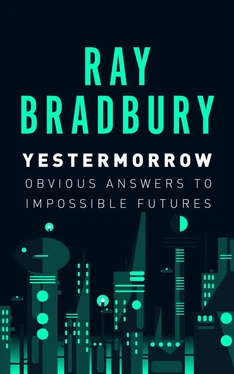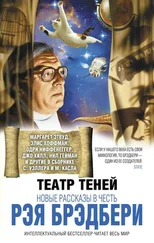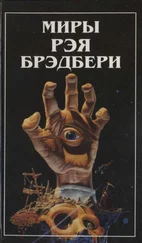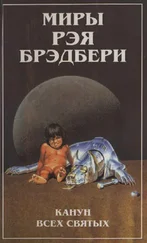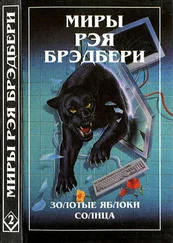But, the Somewhere To Go will only work, I repeat, if it opens late and closes late.
Los Angeles, at this very moment, has many smaller shopping centers that stay open fairly late but which are, instantly, unappetizing. Arriving, one sees thousands of cars, acres of blacktop and confusion. Or, if the cars are hidden out back, as at the Santa Monica Mall or the small plaza near the May Co. at Pico-Overland, you find, once again, the same mistake—no true center, no dramatic watering trough for one’s imaginary horses, no place where one can whittle, spit, and scratch.
Ocean Park, before it was improved out of existence, once had to perfection all the things I most desire.
No, I don’t mean P.O.P. I mean the old Ocean Park fifteen years ago, with its bingo parlors and pastrami dips and pizza shanties, its bookshops, its theater, the seedy pier itself with all its frayed games, and thousands of places to sit and snooze or yammer and gossip. It’s gone now, its shops plowed under and concreted over. Its good people have been real-estated, delegated, outlawed away, pent up for some unnamed sins in those dreadful new tenement towers that front the beach, and not allowed out. What’s to go out for, if you dared? No one bothered to think, to remember, to rebuild the small shops. No one had even a small dream that maybe old and young might like to deliciously collide and saunter in thousands of small, warm crowds as they once did night and day by that beautiful sea.
A shred of that grand old Ocean Park is stranded high and dry, praise God, right now on Fairfax Avenue. There, by sheer fine good Jewish community spirits, I find the kind of life I have been describing in this article. With Canter’s Delicatessen as social gymnasium center, and many shops open most nights, it is one of the last few lost places for us to Flee, Go Find, for us to actually Look, See Friends! As in the thirties when just such social assemblages of familiar faces happened every night in our lives around Western and Olympic, Beverly Boulevard and Vermont, or Vermont and Washington, where life, not very high but certainly not low, was lived.
Let me beat the long dead urban horse once more, and then recapitulate.
Two years ago, I lectured one Saturday night in Pasadena. Finishing about 8:30, I walked down into the heart of Pasadena searching for a cab.
The streets and sidewalks were empty! No cars. No people. And this, mind you, early on a Saturday night. It looked more like Sunday sunrise in Zion, Illinois.
Finding a cab, I made it to Hollywood. There, at Vine Street, I found a far more unnerving sight: traffic blocked for a mile in four directions. Beetle infestations of automobiles loomed and burnt out their motors everywhere. Thousands of people jammed the sidewalks.
The facts are plain and sad. Pasadena, and many places like it, is shut. Hollywood, with its good and bad, hustlers and prosties and yellow-robed Buddhist chanters and singers, is open. The Pickwick Bookshop, true center of Hollywood for most of us, is wall-to-wall people every night but Sunday.
I could list hundreds of similar community examples. But they all add up to our singing a blues version of that old song, “Where Is My Wandering Boy Tonight?” We ought to know. We helped drive him off and away.
Which brings us round to a final description of my Plaza:
• Bandstand at the center on which local talent can sing and play.
• Four hundred or five hundred chairs surrounding the bandstand, where people can sit all night, every night, under the heavens. In winter, such as it is in California, outdoor heating can be installed.
• Around this, the great pedestrian treadway. On this, real people actually walking !
• And around them, in turn, the shops, the theaters.
• Underneath: parking. Or the next block over, hidden, for God’s sake, behind bushes and trees.
Final points:
• In all eating places, plenty of booths facing each other, for conviviality. Too many places, like Baskin-Robbins, have seats lined up against the walls. The message implied is: So Long. Get Away. Good-bye.
• Again: late hours. Better a small businessman working till midnight than a small businessman bankrupt and on relief.
If you can’t build a large plaza, build a small one with just one or two theaters and a dozen shops. The most important element that remains constant is the center, the conversation pit, the plaza walk-around concourse where people know , are absolutely sure if they bother to go, they will see someone they knew from junior high, high school, college or some neighboring area. The Bunch, The Gang, The Friends must have a Hearth.
Let’s start with one plaza such as this, and build more. Needless to say, the ones that follow must not duplicate the first in texture or color or sense of drama. The plaza conceived in Fullerton should not be repeated in Pacoima, Watts or Baldwin Park.
Just as in the great cities of the world, there is only one Eiffel Tower for Paris, one Tower of London, one St. Peter’s for Rome, so, on a lesser level, each plaza in all the 80 lost and needful Los Angeles small towns should in some way strike individual chords of the Mexican, Jewish or Black backgrounds they arise from. In West Hollywood, of course, you would let the crazy fine Greenwich Village spirit that runs wild there work your design for you.
We have been yelling for years against the Orwellian world of 1984, and at the same time have been busy building such a world and walling ourselves in.
Now we must remember that drama and theater are not special and separate and private things in our lives. They are the true stuffs of living, the heart and soul of any true city. It follows we must begin to provide architectural stages upon which our vast populations can act out their lives.
Many plazas exist now, waiting to be rehabituated, redramatized, like the Main Street Plaza and Pershing Square. Others, like the Santa Monica Mall, or Century City, lack only a true pedestrian walk-around center to make their hearts beat. Most must be built from the ground up.
And, in building, it seems, we must look back to the dear Jews and the rare Latins to learn how to live.
O Children of Israel, come out of Fairfax and old Boyle Heights. Send us your architectural rabbis to lead us from the wilderness of the blacktop and oil drips and gasoline fumes. Open our eyes so we may see. Sit us down so we may rest. Open our mouths so we may talk and eat…
O small towns of Mexico, send us your mariachis to strum at the centers of our plazas to bring the people back, the girls wandering this way, the boys ambling that, two warm rivers running softly over the wide mosaic walks.
Dear Moses, sweet Virgin of Guadalupe, teach us Gentile Protestants how once more to spend an evening that is neither far-traveling and senseless, nor violent, nor sick, nor hidden away from the world in colored but colorless TV.
Inhabitants, inheritors of Tel Aviv and Guadalajara, hear me now. The hour grows late. Help, o help. Give us back to ourselves.
For what finer gift is there in all the world?
1970
THE AESTHETICS OF LOSTNESS
Written as a conceptual design for Horton Plaza in San Diego.
To be lost. How frightening.
To be safely lost. How wonderful
To not know where we are, as children, is a nightmare.
To not know where we are, as adults, traveling, is a perfect dream.
I know not if others have dared an essay on this subject. I have rambled on about it for years and feel I should now get it out on the pavements.
Think back on your first trip to New York, London, Paris or Rome. Large cities, preferably, for then the chance of getting deliciously lost is enhanced.
Читать дальше
